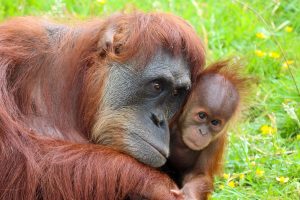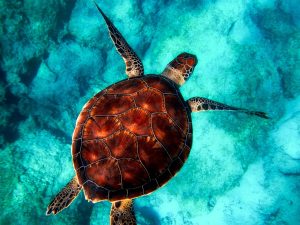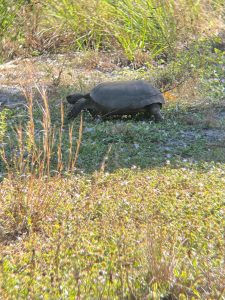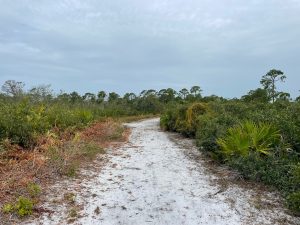
Approximately one-third of wildlife species in the United States are listed as vulnerable, according to a National Wildlife Federation report (2018).
All around the world, wildlife face threats from a variety of human caused-factors, such as poaching, illegal and unethical fishing, unsustainable and poorly planned development, and habitat loss, fragmentation, and degradation. It is a sobering fact to learn that our actions have caused the decline of 69% of wildlife populations around the world (WWF, 2022). However, the good news is that our actions can also be changed to protect our wildlife and the habitats that we all require to survive.
Celebrating Conservation on a Global and Local Scale

Each year on December 4th, we celebrate World Wildlife Conservation Day. This day serves as a reminder of the urgent need to protect and conserve all of the unique and invaluable wildlife that live in our ecosystems. Proposed in 2012 by previous Secretary of the State, Hillary Clinton, this day has been observed and promoted internationally to raise awareness for the plight of the world’s wildlife- a cause that is intricately connected to the wellbeing and prosperity of human communities too.
In honor of World Wildlife Conservation Day, follow along with Extension each week for the month of December, as we highlight animals from Florida’s threatened and endangered species list, conservation efforts to protect them, success stories, and what you can do to support wildlife- before it is too late.
What is Wildlife Conservation?
When it comes to wildlife conservation, or the protection, effective management, and preservation of a species into perpetuity, more than just those animals themselves are involved. Wildlife conservation scientists study the ecology of the species that needs to be protected in order to understand their relationship to plants, other wildlife, and the environment around them. This provides them with an understanding of how the presence or absence of other associated plant and animal species in their environment may affect the health and population of the focus species. Water quality, plant populations, temperature, environmental pollution, and more all impact an animal’s ability to survive, and as such, are important considerations when it comes to conservation.

Take sea turtles, for example. Sea turtle conservation programs enlist a variety of tools and tactics to support the ability of sea turtle species to have the best chance possible at survival, from nesting and hatching, to their lives out at sea. This requires multiple approaches, from the dedicated organizations and volunteers who patrol beaches in the darkest parts of the night and the earliest hours of the day, to the advocates who educate their community about the impact of light pollution, and the establishment of marine protected areas that preserve critical habitats for turtles and other species throughout their lives. Conservation addresses challenging, complex, interconnected issues, and weaves a web of protection from many solutions.
Healthy Habitat
Perhaps the most important aspect of wildlife conservation is the protection of the habitat that threatened and endangered species depend upon to survive and thrive. Habitat loss and fragmentation is one of the top causes of biodiversity decline in the world. Large, healthy, continuous spans of habitat are broken up into smaller, altered portions by human activities such as development and the construction of roads. These smaller, degraded habitats do not provide wildlife species with the same benefits and survival needs as intact, unbroken habitats do. It is important to protect suitable wildlife habitat, and ensure that animals can safely travel between habitats.

How Sarasota County Helps Protect Its Wildlife
In Sarasota County, preserves such as Jelks Preserve and South Venice Lemon Bay Preserve set aside critical lands that not only protect the health of some of our unique and precious Florida plant communities, water quality, and ecosystems, they also protect threatened and endangered wildlife species like the Florida scrub-jay and the gopher tortoise. The Environmentally Sensitive Lands Protection Program (ESLPP) has protected over 40,000 acres of land since its inception in 1999.
This impactful program, combined with other local and state efforts, has led to 35% of Sarasota County lands being protected. You can visit one of these beautiful, biodiverse preserves for a peaceful walk, or virtually explore a few of them with our Natural Areas Story Map, which features interactive maps with plant, wildlife, and historical information for select county preserves. In order to best protect wildlife, many preserves limit certain activities, and do not allow dogs to be brought into the area. Respecting preserve guidelines and rules is one way to help conserve wildlife and the suitable habitat that they have left.

Conserving Florida’s Wildlife
There is so much exciting work being done in the field of wildlife conservation, and Florida offers us the opportunity to learn from many unique case studies of both cautionary tales and success stories. With greater education, advocacy, and collaborative efforts, we can protect wildlife and the habitats that they depend on- for their sake and ours!
Follow along with this month-long blog series to learn more about Florida’s threatened and endangered wildlife species, conservation efforts to protect them, success stories, and what you can do to support wildlife.
Find free webinars and resources about the wildlife species that we are so fortunate to have call Florida their home.
Resources
World Wildlife Fund. (2022). Living Planet Report 2022. https://livingplanet.panda.org/en-US/#:~:text=The%20Living%20Planet%20Report%202022,are%20to%20reverse%20nature%20loss.
National Wildlife Federation. (2018). Reversing America’s Wildlife Crisis. https://www.nwf.org/Our-Work/Wildlife-Conservation/Policy/Recovering-Americas-Wildlife-Act
 3
3
